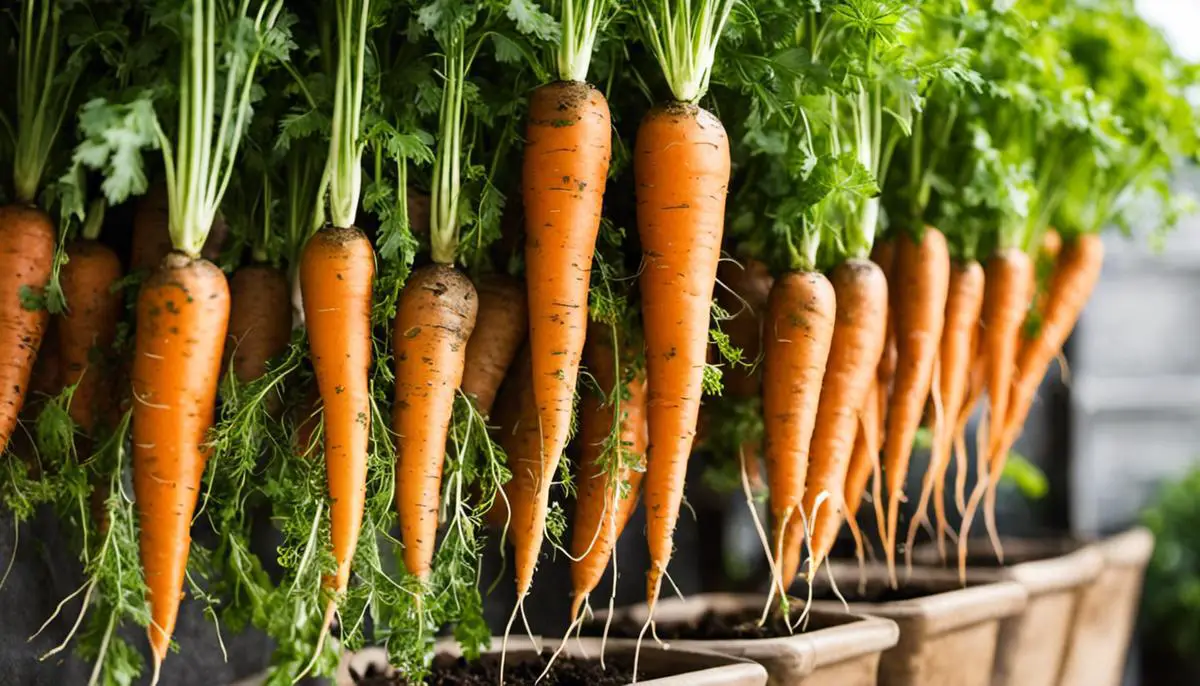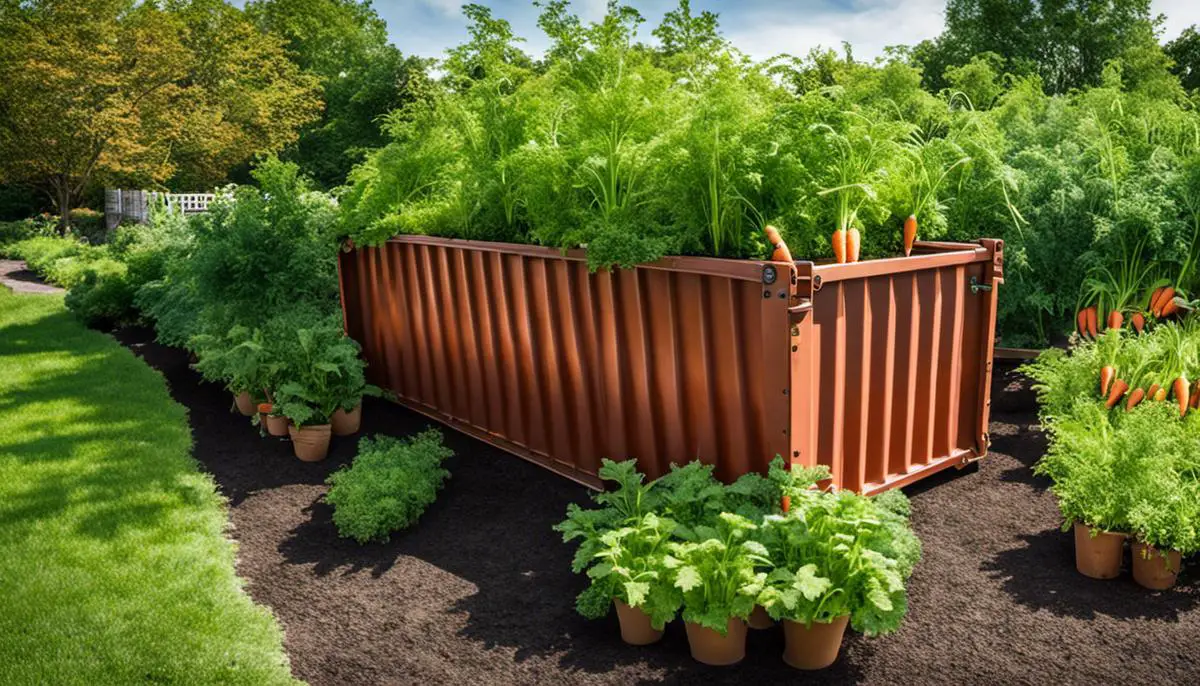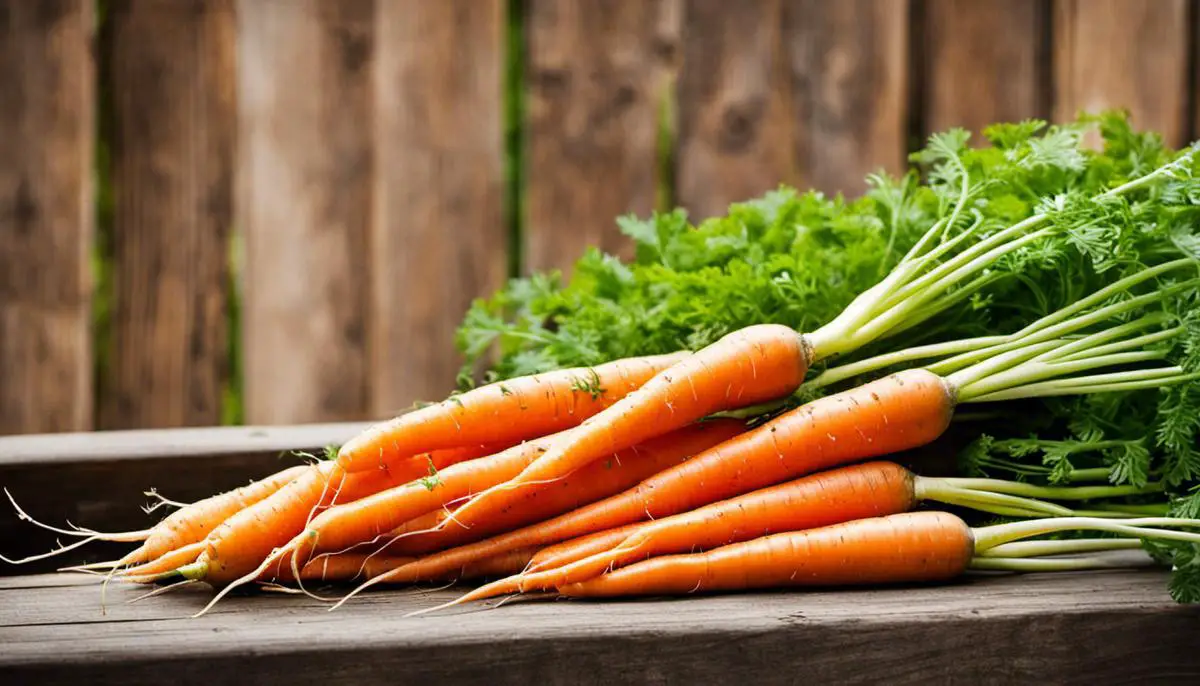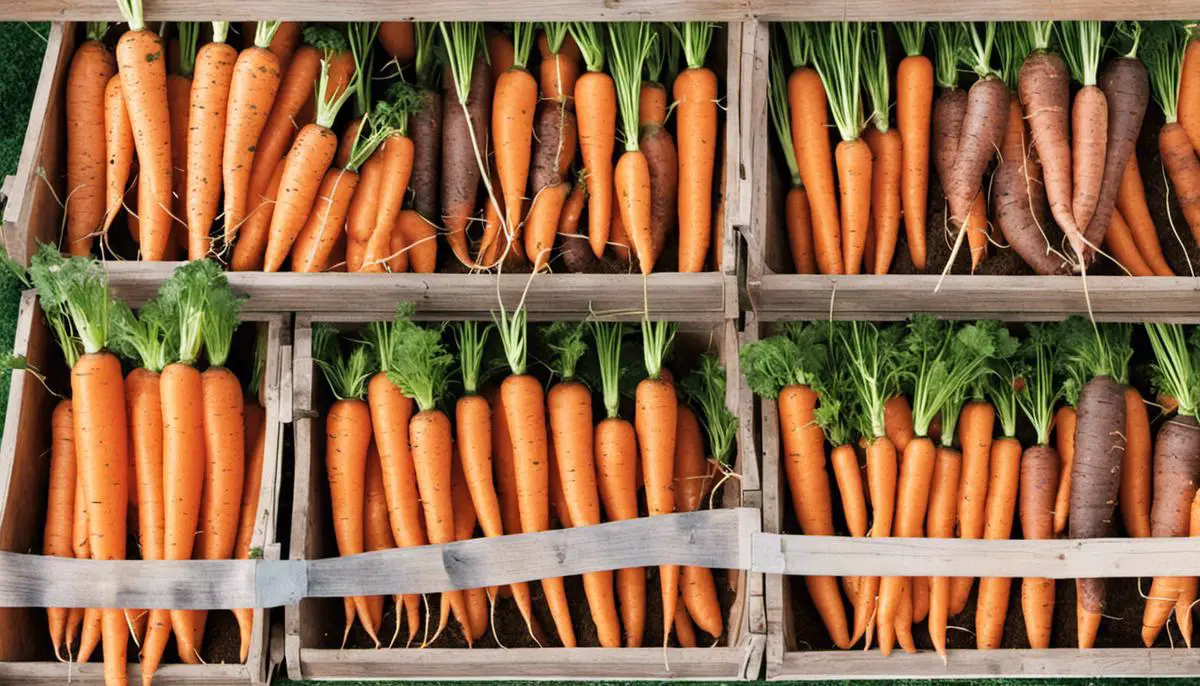Gardening offers a multitude of benefits: stress relief, fresh produce, and a connection with nature, just to name a few. One popular ingredient in many homemade dishes that can be grown at home is the humble carrot. Although traditional gardening requires a significant amount of yard space, the advent of container gardening has revolutionized our approach, making it accessible for city dwellers, apartment residents, or anyone with limited outdoor space. This paper provides a comprehensive guide to container carrot gardening, shedding light on the perfect containers, the selection and planting of carrot seeds, and the caring process to give your carrot plants the best chance at a healthy and productive life.
Choosing the Right Container
Title: Crafting the Perfect Carrot Container Garden – Key Characteristics Explained
Container gardening has sparked a delightful revolution for gardening enthusiasts over the past few years. It’s an accessible, convenient method for cultivating plants, vegetables, and herbs. Among these, carrots indeed make one of the most popular container-grown vegetables. Here, we’ll delve deep into the specifics, highlighting the requisite characteristics a container should possess for successful carrot gardening.
Reader Poll: What online courses would interest you?
1. Depth: Delving Down to the Root of it
Carrots are root vegetables, and a carrot’s most delicious part is its root. Therefore, the depth of the container is the critical aspect to consider. Containers should be at least 12 inches deep for standard carrot types. Each additional inch can provide more room for the carrots to grow, allowing the roots to reach their full potential. Shorter carrot variants like “Paris Market” or “Little finger” are content with slightly shallow containers.
2. Width: Space to Stretch Out
In addition to depth, the width of the container further plays a pivotal role. Carrots need enough space to prevent overcrowding, which can hinder growth severely. Ideally, a container should be about 12-15 inches wide, which will accommodate a decent number of seeds while ensuring that each carrot has enough room to thrive. However, it’s important to remember that the more substantial the container, the heavier it will become when filled with soil, so ensure it’s in a suitable spot or consider a pot with wheels for easy mobility.
3. Material: Playing a Crucial Role
While most containers can work for carrot cultivation, some materials simply outplay others. Terracotta, plastic, and wood make excellent options. These materials provide an ideal insulation and won’t heat too much under the sun, keeping the soil cool – a vital feature for carrots, as they prefer cooler soil temperatures. Comparatively, metal pots have a tendency to overheat, which can result in unhappy carrots.
Subscribe to our newsletter!
4. Drainage: No Drowning, Please!
An often-overlooked element of successful container gardening is efficient drainage. A container should have sufficient drainage holes to prevent waterlogging, which will not only help avoid root rot but also achieve the slightly moist soil condition that carrots crave.
5. Food Safe: Because It’s What’s Inside That Counts
As we’re dealing with an edible crop, it won’t hurt to ensure that the container is food-safe. Some pots may be coated with harmful substances, like lead-based paints. Hence, procuring a pot designated as safe for food-producing plants, or opting for untreated terracotta or wood can be a sensible choice.
As beautiful as container gardening is, the excitement is in understanding and managing the details. Selecting the right container for carrots might seem trivial, but it’s these very details that shape the character of the hobby. With these points in mind, you’re well on your way to growing the most stunning, delicious container carrots! Happy gardening!

Selection and Planting of Carrot Seeds
Discovering the Joys of Container Gardening with Carrots
Embarking on the journey of container gardening is an exciting venture, particularly when your endeavor is growing crunchy, flavorful carrots. Once you’ve followed the fundamental guidance to select containers that allow optimal growth space for your carrot variety and have sufficient drainage, while being safe for growing consumable crops, your next steps are choosing the right seeds and understanding the ideal planting process.
Selecting your very own Carrot Seeds
First off, remember that carrots come in various shapes, sizes, and colors. Short and stubby ‘Chantenay’ carrots are ideal for shallow containers, while slender ‘Nantes’ or long ‘Imperator’ carrots need deeper containers. Rainbow varieties offer an array of vibrant hues that bring aesthetic appeal to your harvest. When choosing seeds, be cautious. Opt for a reputable seed supplier to ensure quality and germination viability.
The Carrot Planting Technique Unveiled
Once your seeds are at the ready, the next stage in your gardening adventure unfolds – planting. This involves a straightforward but delicately handled process. Start by filling your pot almost to the top with an organic, loamy potting mix. Leave an inch or two from the top, as this makes watering easier and minimizes soil overflow.
After your pot is sufficiently filled with soil, it’s time to distribute your seeds. Start sowing by scattering seeds on the surface of your soil as evenly as possible. Aim for spacing intervals of about 1-2 inches, which will help prevent the hinderance of overcrowding. Remember, carrots are notorious for their slow germination rate, so don’t worry if sprouts take a week or more to appear.
Once your seeds are dispersed, gently sprinkle a thin layer of potting soil to cover them – carrots need the darkness to germinate effectively. The seedlings are delicate, so adequacy is more important than depth; a covering of just about ¼ to ½ inches is sufficient.
Right after planting, watering must be done with extreme care. Water lightly using a spray to avoid washing away the seeds or creating a hard crust on the soil surface.
Remember, Planting is only the Beginning
Successfully planting your carrot seeds brings a sense of accomplishment, but it’s just the beginning of your container gardening journey. Adequate sunlight, consistent moisture, and regular fertilization are equally important for your container carrots. Happy gardening!

Caring for Container Carrots
Digging deeper into the semantics of growing the perfect container carrots, let’s roll up our sleeves and discuss the importance of good quality seeds. It’s rightly opined that ‘The flavor of the fruit is a direct reflection of its seed’.
Champion, Nantes, and Short ‘n Sweet are excellent varieties for container growth due to their smaller size and adaptability to the compact soil conditions in containers. These robust types can withstand tough conditions whilst producing flavorful produce.
Onward to the sowing process – for optimal growth, ensure each seed is spaced approximately 2 inches apart. This allows for each seed to have its own dedicated space to grow without competition for resources. In terms of depth, a light dusting of soil, approximately 1/2 inch, is all that is required to cover the seeds. Be careful not to overly compress the soil during this stage as it can lead to the formation of a hard crust, which makes it difficult for the seedling to break through.
Often an underestimated aspect of container gardening is vigilant watering practices. Especially in the initial stages post-planting, one must ensure the soil is consistently and evenly moist to induce germination. Overwatering could potentially displace the seeds or contribute to waterlogging issues, which we’ve previously discussed as a major hassle. Tools such as a mist sprayer can work wonders in this context, providing gentle yet adequate hydration.
Furthermore, continuing care for these vibrant vegetables entails a fine balance of sunlight, moisture, and nutrition. A minimum of six hours of daily sunlight is quite crucial for a healthy carrots crop. Place the container in a south-facing position, if accessible, to capture maximum direct light.
On the subject of moisture, remember that carrots, like many other root vegetables, prefer steady moisture levels. To achieve this, it’s a clever idea to mulch the top of the container with organic matter such as well-aged compost or straw. Mulching aids in retaining moisture, suppressing weeds, and it gradually breaks down to release nutrients into the soil.
Speaking of nutrition, container soil needs to be fortified regularly as it does not have the natural nutrient replenishment available in the ground. A gentle, slow-release fertilizer rich in potassium and phosphorus administered once every 30 days can do wonders for root development. Refrain from fertilizers high in nitrogen as they stimulate foliage growth at the expense of the roots.
This in-depth understanding and hands-on approach to container care truly have the power to transmute the equation of your carrot gardening saga. Armed with this knowledge, why not embark on this adventure of growing carrots in containers with zeal and passion and see what wonderful surprises they have in store for you?

Embracing the practice of container carrot gardening can truly make a difference in your relationship with food, with nature, and with your own wellness. It’s a skill that requires patience and attention to detail, from selecting the right container to choosing the suitable variety of carrot seeds to understanding the care they need. But the rewards are immense: nutrient-rich vegetables straight from your garden, satisfaction in your self-sufficiency, and a newfound appreciation for the natural world. As we continue to explore more sustainable ways of living, container carrot gardening stands as an exemplary model of how we can make the most of our resources. Take these insights to hand, and may your garden, no matter how small, be abundant and thriving.

